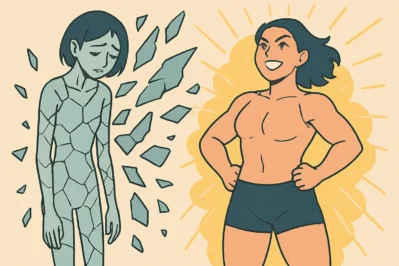Deconstructing K-Beauty: The Rise of ‘Healthy Beauty’
Hello! Welcome back to [Daily Hangul], where we upgrade your Korean skills one post at a time!
Have you ever scrolled through Instagram and marveled at the seemingly perfect figures of K-pop idols and actors? Today, we’re diving deep into a fascinating and important topic: analyzing the ideal body images constructed by the media. This isn’t just about vocabulary; it’s about understanding the cultural conversations happening in Korea right now. Lately, there’s been a noticeable shift in Korea away from a singular, ultra-thin ideal towards celebrating “healthy beauty” (건강미). Understanding this conversation will not only boost your Korean but also give you a richer perspective on modern Korean society. Let’s get started!
Core Expressions You Need to Know
Here are some essential terms to help you discuss and critique beauty standards like a native speaker.
1. 획일적이다 (hoek-il-jeok-i-da)
* Pronunciation [Romanization]: hoek-il-jeo-gi-da
* English Meaning: To be uniform; monolithic; standardized.
* Detailed Explanation: This adjective is perfect for critiquing situations where diversity is lacking and everything is forced into one mold. It carries a slightly negative and critical nuance. When you say the media’s beauty standard is 획일적이다, you’re pointing out that it promotes only one specific type of beauty, ignoring all others.
2. 미의 기준 (mi-ui gi-jun)
* Pronunciation [Romanization]: mi-eui gi-jun
* English Meaning: The standard of beauty.
* Detailed Explanation: This is a fundamental phrase for this topic. ‘미(美)’ means beauty, and ‘기준(基準)’ means standard or criterion. You can use this to discuss how beauty standards differ across cultures or change over time. For example, “1990년대의 미의 기준과 지금의 미의 기준은 다르다.” (The standard of beauty in the 1990s is different from the standard of beauty now.)
3. 외모지상주의 (oe-mo-ji-sang-ju-ui)
* Pronunciation [Romanization]: oe-mo-ji-sang-ju-ui
* English Meaning: Lookism; the belief that appearance is of the highest importance.
* Detailed Explanation: This is a compound noun: ‘외모’ (appearance) + ‘지상주의’ (supremacism). It’s a key term used in social critiques in Korea to describe a society that places excessive value on physical appearance, often leading to discrimination. It’s a formal and critical term you’d see in news articles or hear in debates.
4. -을/를 조장하다 (-eul/reul jo-jang-ha-da)
* Pronunciation [Romanization]: -eul/reul jo-jang-ha-da
* English Meaning: To foster; to encourage; to promote (something negative).
* Detailed Explanation: This verb is used when you want to say that something is encouraging a negative trend or atmosphere. It’s stronger than simply “encouraging.” For example, you can say, “미디어는 과도한 다이어트를 조장해서는 안 된다.” (The media should not promote excessive dieting.) It’s a powerful verb for expressing a critical opinion.
Example Dialogue
Let’s see how these expressions are used in a real conversation. Two friends, Jimin and Sora, are looking at a magazine together.
A (지민): 와, 이 아이돌 화보 진짜 멋있다. 몸매가 비현실적이네.
Wow, this idol’s photoshoot is amazing. Her figure is unreal.
B (소라): 응, 멋있긴 한데… 가끔 미디어가 너무 획일적인 미의 기준만 보여주는 것 같아. 이런 사진들이 결국 외모지상주의를 조장하는 거 아닐까?
Yeah, it’s cool, but… I sometimes feel the media only shows a very uniform standard of beauty. Don’t you think photos like this end up promoting lookism?
A (지민): 일리 있네. 그래도 요즘엔 ‘피지컬 100’ 같은 프로그램 덕분인지 건강한 몸에 대한 관심도 높아졌잖아.
You have a point. But thanks to shows like ‘Physical: 100’, interest in healthy bodies has grown recently, right?
B (소라): 맞아. 마른 몸매만 강조하던 예전보다는 훨씬 긍정적인 변화라고 생각해.
That’s right. I think it’s a much more positive change compared to the past when only skinny bodies were emphasized.
Cultural Tip & Trend Analysis
The Rise of ‘건강미’ (Healthy Beauty)!
For a long time, the dominant 미의 기준 in K-media was the






